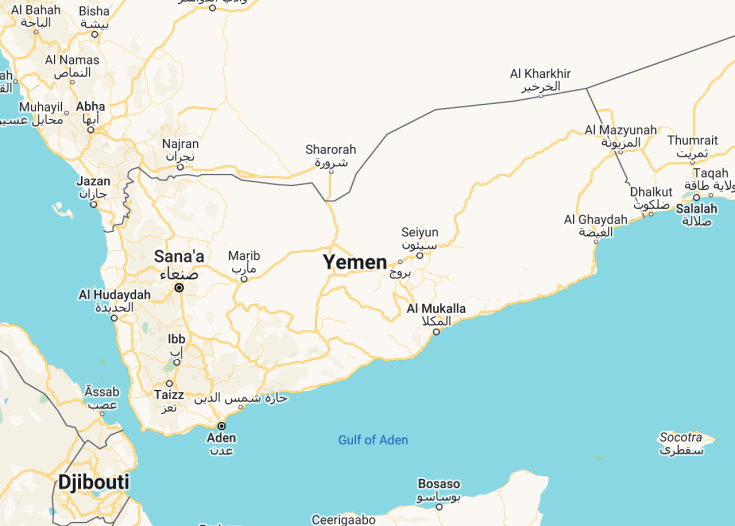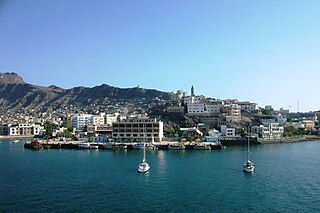Yemen, located at the southern tip of the Arabian Peninsula, offers an intriguing blend of ancient history and rich culture. It’s home to four UNESCO World Heritage Sites, including the historic towns of Zabid and Shibam. The old city of Sana’a, with its stunning multi-story rammed earth buildings, epitomizes the nation’s architectural splendor. While Yemen has faced political unrest and challenges, its unparalleled historical sites and the warmth of its people ensure it remains a destination of profound significance for intrepid travelers and history aficionados.
Always check current travel advisories and ensure safety precautions when considering a visit to Yemen.
Engage a local guide to navigate the historical sites and gain deeper insights into Yemeni culture.
Yemen: a land of ancient history and rich traditions
| Capital | Sana’a |
| Time in Yemen | Arabian Standard Time (AST), GMT+3 |
| Language spoken | Arabic |
| Population | Approximately 29.8 million (World Bank, 2019) |
| Religion | Islam (99% – Sunni and Shia) Others (1%) |
| Currency | Yemeni Rial (﷼, YER) |
| Airports | Sana’a International Airport Aden International Airport Ta’izz International Airport |
Yemen, a nation with an ancient heritage, stands as a testament to the indomitable spirit of human civilization. Located at the southern tip of the Arabian Peninsula, it has long been a confluence of cultures, trade, and histories, making it a magnet for explorers and scholars alike.
Historically, Yemen played a pivotal role in the spice and incense trade, connecting East and West. Its ancient city of Marib was once the capital of the Sabaean Kingdom, famously associated with the Queen of Sheba. The old city of Sana’a, with its towering mud-brick buildings, is one of the world’s oldest continuously inhabited cities, offering a glimpse into a world that has withstood the sands of time.
Socotra Island, another gem of Yemen, is often referred to as the “Galápagos of the Indian Ocean” because of its unique flora and fauna, having evolved in isolation over millions of years. The Dragon’s Blood trees, with their unique umbrella-shaped canopies, are a particularly iconic sight on the island.
Yemen’s coastal regions, like the port city of Aden, have seen countless merchants, travelers, and conquerors. These areas provide a beautiful juxtaposition of Yemen’s rich history and its access to the vastness of the sea. The nation’s mountainous interior, meanwhile, showcases terraced agriculture, a testament to the adaptability and ingenuity of its people.
Though Yemen has faced challenges in recent times, its historical and natural treasures underscore the country’s importance in the annals of world history and its potential as a unique destination for the intrepid traveler.
Where is Yemen located?
Yemen is situated at the southern end of the Arabian Peninsula in Southwest Asia. It is bordered by Saudi Arabia to the north, the Red Sea to the west, the Arabian Sea and Gulf of Aden to the south, and Oman to the east.
What is Yemen famous for?
Yemen is renowned for its rich history, particularly the ancient city of Sana’a, its role in the spice and incense trade, and the unique biodiversity of Socotra Island, including the iconic Dragon’s Blood trees.
History
Ancient Period: Early Civilizations and Empires
The history of Yemen is rich, spanning thousands of years. Ancient Yemen was home to several prominent civilizations, notably the Sabaean Kingdom, which thrived due to its control over the incense trade routes. The legendary Queen of Sheba, who is mentioned in religious texts, is believed to have ruled this kingdom. Over time, other great empires such as the Himyarites and the Hadramawt emerged and controlled vast territories.
7th Century: Islamic Expansion
Islam arrived in Yemen during the lifetime of the Prophet Muhammad in the 7th century. Yemen embraced Islam, and its strategic location near the Arabian heartland made it a crucial region in the early Islamic caliphates. Yemen also became a center of learning and culture during the Islamic Golden Age.
16th to 19th Century: Ottoman and European Influence
In the 16th century, the Ottoman Empire sought to exert control over Yemen, facing resistance from the Zaidi Imams who governed parts of the region. Although the Ottomans managed to establish a foothold, their control was often limited. By the 19th century, European powers, especially the British, began showing interest in Yemen, particularly its port city of Aden. The British eventually established a protectorate in South Yemen.
20th Century: Paths to Independence
The 20th century was marked by significant changes for Yemen. In 1962, a revolution in North Yemen led to the establishment of the Yemen Arab Republic, ending the rule of the Zaidi Imams. South Yemen, on the other hand, witnessed an anti-British uprising, leading to its independence in 1967 as the People’s Democratic Republic of Yemen. The two Yemens remained separate entities for years.
1990: Reunification and Aftermath
In 1990, North and South Yemen unified to form the Republic of Yemen. The unification, however, was not without its challenges. Tensions between the north and south culminated in a brief civil war in 1994. The north emerged victorious, but regional disparities and grievances persisted.
21st Century: Contemporary Challenges
The 21st century has brought numerous challenges for Yemen. The Arab Spring protests of 2011 led to significant political changes, with long-time President Ali Abdullah Saleh stepping down. However, the political transition was far from smooth. By 2015, Yemen was embroiled in a complex civil war, with Houthi rebels, backed by Iran, clashing with government forces and a Saudi-led coalition. The conflict has resulted in a significant humanitarian crisis, making Yemen one of the most pressing global concerns.
Visit Yemen
What to see and do in Yemen
Yemen offers a rich cultural and historical experience for visitors. Some of the must-see attractions include:
- The ancient city of Sana’a, with its unique architecture and bustling souks
- The archaeological site of Marib, home to the ruins of the Kingdom of Saba
- The UNESCO World Heritage Site of Shibam, known as the “Manhattan of the desert” for its towering mud-brick skyscrapers
- The beautiful port city of Aden, with its historic architecture and stunning beaches
- The picturesque village of Al-Hajjara, perched on the edge of a cliff
Visitors to Yemen can also enjoy exploring the country’s stunning natural landscapes, including the Socotra archipelago, known for its unique flora and fauna, and the stunning landscapes of the Hajjah and Al-Mahwit regions.
Events in Yemen
Yemen hosts various cultural and religious events throughout the year. Some of the notable events include:
- The Sana’a Summer Festival, which showcases Yemeni arts, crafts, and music
- The Imilhag Festival, a traditional celebration of Yemeni folklore and customs
- The Eid al-Fitr and Eid al-Adha festivals, which mark the end of Ramadan and the Islamic pilgrimage season respectively
These events provide an opportunity to experience Yemeni culture, traditions, and cuisine.
Best time to visit Yemen
The best time to visit Yemen is generally during the cooler months of October to April, when the weather is more pleasant for exploring the country. However, it is important to stay updated on the current security situation and follow travel advisories, as Yemen has been affected by ongoing conflicts and political instability.
Is Yemen worth visiting?
Yemen has a unique cultural heritage and stunning natural landscapes that make it a captivating destination for adventurous travelers. However, it is essential to consider the current security situation and exercise caution while planning a trip to Yemen. The country has faced significant challenges in recent years, including political instability and armed conflicts. Therefore, it is important to research and assess the risks before deciding to visit Yemen. There are alternative destinations in the region that offer similar cultural experiences with greater accessibility and safety.
Common questions
What are the must-visit places in Yemen?
What is the climate like in Yemen?
What are the traditional dishes to try in Yemen?
- Zurbian: A fragrant rice dish usually served with tender pieces of meat (chicken, lamb, or beef) cooked in a flavorful broth.
- Mandi: A popular dish made with tender, slow-cooked meat, typically served with rice and accompanied by flavorful sauces.
- Salta: A hearty stew made with meat, vegetables, and spices, often served with bread.
- Bint Al Sahn: A sweet, flaky pastry made with honey and ghee, often enjoyed with a cup of Yemeni coffee.
These are just a few examples, and Yemeni cuisine offers many more delicious dishes to explore.
Are there any safety concerns in Yemen?
What is the local currency in Yemen?
What are some common customs and traditions in Yemen?
- Qat Chewing: Qat is a stimulant leaf widely chewed by Yemeni people. It is often consumed in social gatherings and is an integral part of Yemeni culture.
- Dress: Traditional Yemeni attire for men is a long, flowing garment called a thawb, while women wear colorful dresses and a veil called a niqab
- Hospitality: Yemenis are known for their warm hospitality. It is customary to offer guests food and drinks and to engage in friendly conversations.
- Weddings: Yemeni weddings are elaborate affairs, often lasting for several days. They involve traditional ceremonies, music, dance, and feasting.
These are just a few examples of the rich cultural traditions found in Yemen.
What is the best time to visit Yemen?
What is the transportation system like in Yemen?
What are some local customs regarding clothing in Yemen?
Are there any health concerns in Yemen?
What are some popular souvenirs to buy in Yemen?
- Handcrafted silver jewelry: Yemeni artisans are known for their exquisite silver jewelry, often adorned with intricate filigree work and traditional symbols.
- Spices: Yemen is famous for its high-quality and aromatic spices, such as cumin, cinnamon, cardamom, and saffron. These make for a perfect culinary souvenir.
- Yemeni coffee: Yemen has a long history of coffee cultivation, and its coffee beans are highly regarded for their rich and distinct flavor.
- Traditional handicrafts: Items like woven baskets, rugs, pottery, and woodwork showcase the skilled craftsmanship of Yemeni artisans.
These souvenirs not only make great mementos of your trip but also support local artisans and contribute to the preservation of Yemeni cultural heritage.
What are the visa requirements for visiting Yemen?
What are some tips for traveling in Yemen?
- Stay informed: Regularly check travel advisories and local news for updates on the security situation and any travel restrictions in place.
- Consult with local authorities: If you have any concerns or questions about safety or local customs, reach out to local authorities or your embassy for guidance.
- Respect cultural norms: Yemen has conservative cultural norms, and it’s essential to dress modestly and respect local customs and traditions.
- Be cautious with photography: Always ask for permission before taking photos of people, religious sites, or military installations. Avoid photographing sensitive areas and respect any restrictions.
- Secure your belongings: Keep your valuables secure and be cautious of your surroundings, especially in crowded places or tourist areas.
- Stay in secure accommodations: Choose reputable hotels or accommodations that have security measures in place.
- Update emergency contacts: Make sure someone back home and your embassy know your travel plans and have emergency contact information.
By taking these precautions and being mindful of the current situation, you can have a safer and more enjoyable trip to Yemen.













